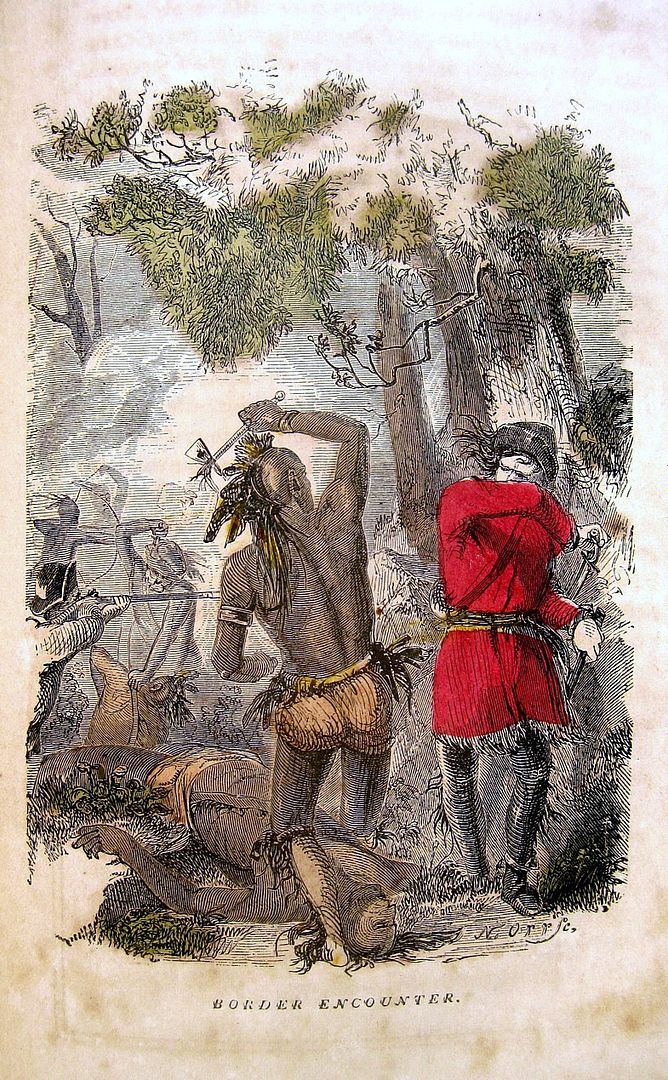
Note: Many of my clients are scholars and researchers seeking specific information related to their field of interest. For their convenience I include the following details directly from this book:
Historical Subject Matter Discussed/Illustrated in this Book (Partial Only, See Full Contents Below): Indian Races North South America Antique Illustrated Hand Tinted Colored Engravings Native American Customs Mythology Religion Ceremonies Rituals Wars Massacres Tribes Nations Chiefs Warriors European Settlers Sioux Minnesota American Antiquities United States Territory Mexico South America Montezuma Cortez Florida Indians Ponce De Leon Fernando De Soto Tampa Spaniards Seminole Indians General Andrew Jackson Osceola Creek Indians Harney Everglades Virginia Jamestown Powhatan Colony Colonists Chickahominy Pocahontas Chesapeake Werowocomoco Pamunky Virginia Massacre Opechancanough Captain John Smith Mayflower Samoset Squanto Massasoit Weston Corbitant Thomas Morton Massasoit Philip Narragansett Indians Rhode Island Pequot War Mohegan Uncas Miantonimo Captain Benjamin Church Swansea Massachusetts Brookfield Hadley Deerfield Springfield Great Swamp Fight Hudson River Lancaster Medfield Seekonk Groton Warwick Marlborough Canonchet Plymouth Weetamoe French and Indian War Captain John Lovewell Iroquois Confederacy Six Nations Joseph Brant Cresap’s War Logan Red Jacket Corn Planter Pontiac’s War Detroit Delaware Shawanees Shawanese William Penn Moravian General Braddock Canestoga Indian Massacre Blue Licks Daniel Boone General Clarke Expedition Harmar St. Clair General Wayne Maumee Rapids Benjamin Harrison Tippecanoe Thames Tecumseh Black Hawk Sac Catawba Cherokee Muscogee Choctaw Chickasaw Natchez Georgia Neetmok Fort Loudon Southern Tribes Fort Mimms Tallusahatchee Talladega Mississippi River Eskimo Kayak Canoe Reindeer Dog Knistenaux Chippewa Pacific Coast Ocean Sioux Dacotah Dakota Mandan Bison Buffalo Crow Blackfoot Western Prairies Nez Perce Walla Walla Chinook Flat-heads Columbia River Fishing Shoshone Snake Indians Root-Diggers Camanche Pawnee Navajo Moqui South America Sioux Uprising New Ulm Minnesota Yellow Medicines Colonel Sibley Little Crow Fort Ridgeley
THE INDIAN RACES OF NORTH AND SOUTH AMERICA. Comprising An Account of the Principal Aboriginal Races; A Description of Their National Customs, Mythology, And Religious Ceremonies; The History of Their Most Powerful Tribes, and of Their Most Celebrated Chiefs and Warriors; Their Intercourse and Wars with the European Settlers; And a Great Variety of Anecdote and Description, Illustrative of Personal and National Character. Including the Late Sioux and Indian Massacres in Minnesota. With Numerous and Diversified Colored Illustrations, From Original Designs. By Charles DeWolf Brownell. Published in 1856 by the American Subscription House, New York. 9" x 6" hardcover, red and gilt binding. Illustrated with hand-colored plates. 640 pages.
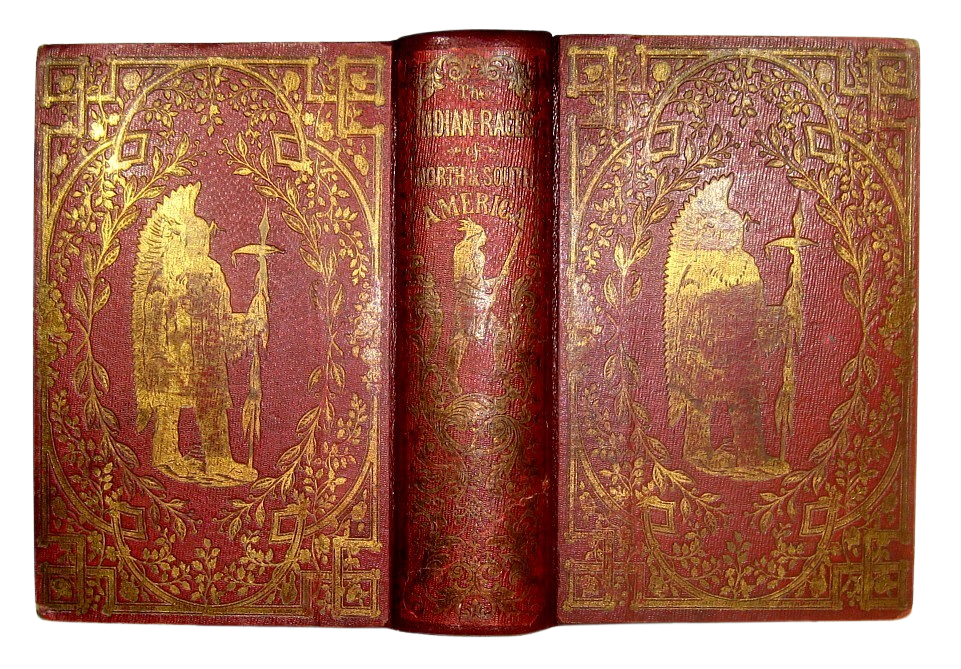
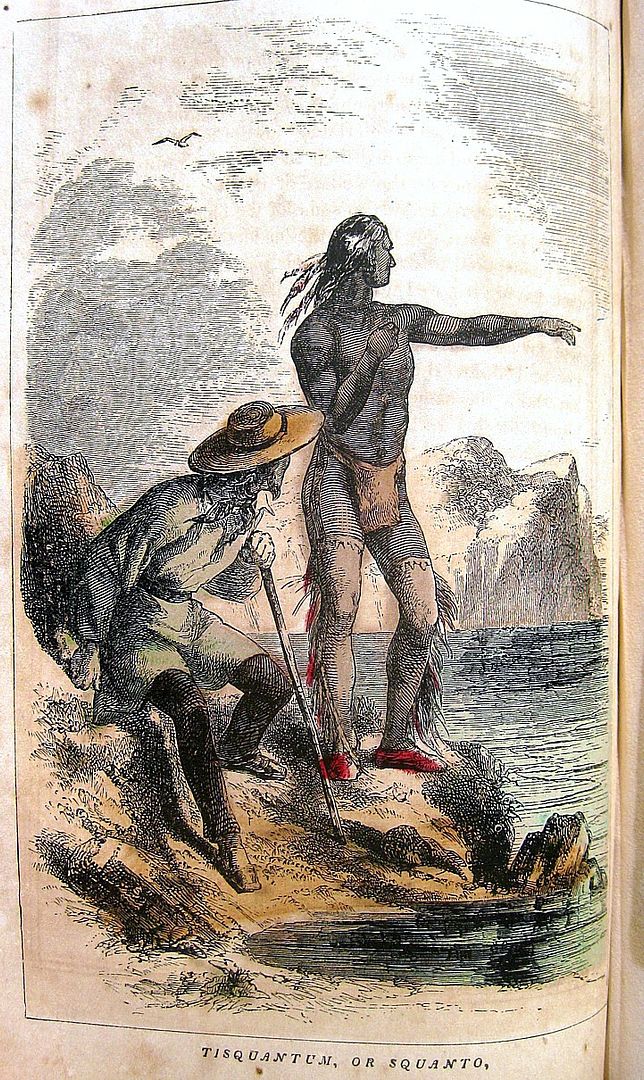
 Condition: GOOD ANTIQUE CONDITION. Exterior as shown in photos. Professionally rebacked with replacement leather spine, original spine decoration carefully reapplied. Firm binding. New inner hinges. Text is clean and complete. Conspicuous foxing. No torn, loose or missing pages. A rare example of this highly sought-after Native American title in red/gilt binding.
Condition: GOOD ANTIQUE CONDITION. Exterior as shown in photos. Professionally rebacked with replacement leather spine, original spine decoration carefully reapplied. Firm binding. New inner hinges. Text is clean and complete. Conspicuous foxing. No torn, loose or missing pages. A rare example of this highly sought-after Native American title in red/gilt binding.DESCRIPTION:
This is a large, magnificent volume entitled THE INDIAN RACES OF NORTH AND SOUTH AMERICA, published in 1857 and written by the famous artist and writer Charles De Wolf Brownell. It is 760 pages in length and beautifully illustrated with numerous full-page, hand-colored engravings, and others.
It is a huge, ambitious study of American Indian history, traditions and culture. The author consulted no less than 50 of the leading authorities of his day in preparing to write this book, including Samuel G. Drake, George Catlin, Henry Schoolcraft and others.
In these pages you will read of the early New England tribes who greeted the Pilgrims in the 1620s -- then just a generation or two later declared war upon them. The Virginia Indians, Powhatan, Pocahontas, and others who became famous for their interactions with Captain John Smith and other settlers at Jamestown. The Florida Indians and the Seminole wars of the early 19th century. The Iroquois, or Six Nations, and their stormy relationship with the white man through the 18th century, including the tribe’s role in the Revolutionary War. Also Pontiac’s War and the Siege of Detroit. The Delaware, Shawanese and other tribes of the middle states. The Indians of the American South, the warrior Tecumseh, and the wars that led to their demise. This book also contains a great deal of information about the American Indian tribes beyond the Mississippi – the Sioux, Dakotah, Blackfoot, Crows, Nez Perce and others. In fact, this 1865 edition contains a full chronicle of the Great Sioux Uprising of 1863 in Minnesota, from the massacre by Indians to the mass execution of Indians by hanging. These chapters are not found in earlier editions.
You will also find chapters on the Indians of Mexico, South America and the West Indies, as well as the Eskimo people of North America’s icy regions.
So much valuable history, so many wonderful illustrations … I know that many of you who follow my auctions are historians or lovers of history, while others are genealogists, collectors, etc. To give you a better idea of exactly what you’ll find in THE INDIAN RACES OF NORTH AND SOUTH AMERICA, I have provided some helpful details below, namely a summary of the Contents and a generous sampling of the colored plates.
I hope you’ll take a few moments to have a look. I’m certain you won’t want to miss out on this book.
CONTENTS ARE:
PART ONE ~ GENERAL CHARACTERISTICS:
CHAPTER ONE: Origin of the North American Indians * Some of their General Customs and Peculiarities
CHAPTER TWO: Religion of the Indians * Their Weapons and System of Warfare * Their Lodgings, Dress, Ornaments, &c.
PART TWO ~ AMERICAN ANTIQUITIES:
CHAPTER ONE: United States Territory, &c.
CHAPTER TWO: Antiquities of Mexico, &c.
CHAPTER THREE: Antiquities of South America
PART THREE ~ THE ABORIGINES OF MEXICO:
CHAPTER ONE: General Remarks * Expedition of Giljalva * Hernando Cortez
CHAPTER TWO: Battles with the Natives * Conciliatory Intercourse * Donna Marina
CHAPTER THREE: Communications with the Mexican Emperor * The Zempoalians and Quiavistians
CHAPTER FOUR: The March to Tiscala * Occupation of the City * Great Massacre at Cholula * Entrance into the City of Mexico, and Interview with Montezuma * Description of the Temple, &c.
CHAPTER FIVE: Seizure and Imprisonment of Montezuma * Execution of Qualpoca and His Companions * Ominous Prospects * Expedition of Pamphilo de Narvaez * Success of Cortez against Him * Return to Mexico * Outrage by Alvarado and Consequent Troubles * Death of Montezuma * The “Nocke Triste” * Battle of Obtumba and Arrival at Tiascala
CHAPTER SIX: Preparations for the Attack on the City of Mexico * Building and Transportation of Brigantines * Siege Laid to the City * Assault by the Spaniards and Their Repulse * Sacrifice of Prisoners * Capture of Guatimozin * Conquest of the Capital
CHAPTER SEVEN: Rebuilding of the City * Extension of Spanish Powers * The March to Honduras * Execution of Guatimozin * Donna Marina * Modern Mexico
PART FOUR ~ THE FLORIDA INDIANS:
CHAPTER ONE: Early Expeditions of Spanish Adventurers * Ponce De Leon * L. Velasquez de Ayllon * Pamphilo de Narvaez * Fernando de Soto; His Landing and Establishment at Tampa * Story of John Ortiz, a Spanish captive among the Indians
CHAPTER TWO: Progress Northward * Contests with the Natives * Vitachuco * Expedition to Cutifachiqui * Departure for the West
CHAPTER THREE: From the conquest by De Soto to the year 1818 * Missionary operations by the Spaniards * Moore’s invasion of Florida * Bowles * Wars of 1812 * Defeat of the Seminoles by General Jackson
CHAPTER FOUR: Commencement of the late Florida War * Treaty of Moultrie Creek * Treaty of Payne’s Landing * Osceola * Doherty’s description * Destruction of Dade’s Command * Battle of the Ouithlacoochie * Conference with Indian Chiefs by General Gaines
CHAPTER FIVE: Condition of East Florida * General Scott’s campaign * Garrison besieged on the Ouithlacoochie * Occurrences during the summer of 1836 * Arrival of Creek allies * Colonel Lane’s expedition from Tampa * Battle of the Wahoo swamp * General Jessup appointed to the Command in Florida
CHAPTER SIX: Pursuit of the Seminoles Southward * Encounter on the Hatchee Lustee * Conference and truce with the Indians * Renewal of the Treaty of Payne’s Landing * Neglect on the part of the Indians to comply with its provisions * Capture, surrender and treacherous seizure of various chiefs * Death of Osceola * Col. Taylor’s campaign
CHAPTER SEVEN: Various minor engagements * Surrender of large numbers of Indians * Continuance of depredations * Bloodhounds from Cuba * Attack upon a company of actors * Seminole chiefs brought back from the west to report their condition to their countrymen * Col. Harney’s expedition to the Everglades * End of the war * Indians shipped west * Numbers still remaining in Florida
PART FIVE ~ THE INDIANS OF VIRGINIA:
CHAPTER ONE: Expedition of Amidas and Barlow * Of Sir Richard Grenville * Of Bartholomew Gosnoll, with Captain Smith * Settlement at Jamestown * Visit to Powhatan * Improvidence and difficulties of the Colonists * Exploration of the Chickahominy * Smith taken prisoner * His treatment by the Indians
CHAPTER TWO: Court of Powhatan * Smith’s preservation by Pocahontas * Supplies by the Indians * Newport’s arrival * Smith’s expeditions up the Chesapeake
CHAPTER THREE: Coronation of Powhatan * Smith’s visit to Werowocomoco for supplies * Treachery of Powhatan * Smith a second time preserved by Pocahontas * Visit to Pamunky * Fight with the King of Paspahegh * Ascendancy of the English
CHAPTER FOUR: Distress of the Colonies * Martin and West’s settlements * Arrival of Lord De La Warre * Retaliations upon the Natives * Seizure of Pocahontas * Her Marriage * Peace with the Indians * Pocahontas visits England * Her death * Death of Powhatan * Pory’s settlement
CHAPTER FIVE: The Virginia Massacre of 1622 and 1641 (or 1644) * Death of Opechancanough
CHAPTER SIX: Smith’s account of the numbers, appearances and habits of the Indians
PART SIX ~ NEW ENGLAND INDIANS:
CHAPTER ONE: Conduct of the early voyagers * Arrival of the May-Flower * Samoset * Tisquantum * Massasoit * Weston’s Colony * Caubitant’s Conspiracy * Trade in firearms * Thomas Morton * Death of Massasoit and Alexander and ascension of Philip
CHAPTER TWO: The Narragansetts * The Pequots * Murder of Stone and Oldham * Endicott’s expedition * The Pequot War * Destruction of the Pequot Fort * The Tribe dispersed and subdued
CHAPTER THREE: Quarrel between the Narragansetts and Mohegans * Uncas and Miantonimo * The Mohegan Land Controversy * Subsequent Condition of the Pequots and Mohegans
CHAPTER FOUR: The Indians furnished with firearms * Situation of the Colonists * Philip’s accession * His treaties with the whites * His true plans * Emissaries sent to Sogkonate * Captain Benjamin Church * His interview with Awoshonks * Murder of John Sassamon
CHAPTER FIVE: Attack on Swansey * Collection of troops * Fight at Miles’ Bridge * Philip driven from the Neck * Church at Punkatese * Destruction of Brookfield
CHAPTER SIX: Philip moves westward * Attacks on Hadley and Deerfield * Goffe, the Regicide * Destruction of Lathrop’s command * Assaults on Springfield and Hadley * Expedition abcxs against the Narragansetts * Outrageous cruelties in their reduction * Philip on the Hudson * Destruction of Lancaster, Medfield, Seekonk, Groton, Warwick, Marlborough, &c. * Canonchet taken, and put to Death * Further Indian ravages
CHAPTER SEVEN: Philip’s return to Pokanoket * Major Talcott’s successes * Church commissioned by the Court at Plymouth * His interview with Awoshonks; with the Sogkonates at Sandwich * His campaign against the Indians * Philip seen * His wife and son taken * Death of Weetamore, Queen of Pocasset * Death of Philip
CHAPTER EIGHT: Pursuit of Annawon and his party * Daring procedure of Captain Church * End of the war and final disposal of prisoners * Summary of the Colonial losses
CHAPTER NINE: The Eastern Indians * Their friendly disposition * Seizure of those implicated in Philip’s conspiracy * French and Indian war in 1689 * Attack on Cocheco * Murder of Major Waldron * War of 1702 * Church’s last campaign * War of 1722 * Captain John Lovewell
PART SEVEN ~ THE IROQUOIS, OR SIX NATIONS:
CHAPTER ONE: General Outlines of Character, &c * Impressions of the Inhabitants of New England respecting the Iroquois * Garangula * His speech to M. de la Barre
CHAPTER TWO: Iroquois tradition relative to their former history * A brief account of the different tribes belonging to the Confederacy, and the Manner of their Union * Incidents of Early Warfare
CHAPTER THREE: Important characters and events of the 18th century * Brant * Cresap’s War and history of Logan
CHAPTER FOUR: History of Brant continued * Connection of the Six Nations with the war of the American Revolution *
CHAPTER FIVE: Continuation of Revolutionary Incidents
CHAPTER SIX: General Sullivan’s campaign against the Iroquois * Subsequent warlike operations of the Nations
CHAPTER SEVEN: Condition of the Six Nations subsequent to the Revolution * Conclusion of Brant’s history * Red Jacket and Corn Planter
CHAPTER EIGHT: Present condition of the Six Nations
PART EIGHT ~ PONTIAC’S WAR:
CHAPTER ONE: French influence over the Indians * British occupation of the Western posts * Pontiac and his plans for exterminating the English
CHAPTER TWO: Siege of Detroit * Battle of Bloody Bridge
PART NINE ~ THE DELAWARES, SHAWANEES, AND OTHER TRIBES OF THE MIDDLE AND WESTERN STATES:
CHAPTER ONE: The Delawares * William Penn * St. Tammany * The Moravians * The Shawanees * French and Indian War * Braddock’s defeat * Massacre of the Canestoga Indians * Daniel Boone
CHAPTER TWO: Division of the Delawares * White Eyes, and Pipe * Indian confederacy of 1781 * Attack on Bryant’s Station, and Battle near the Blue Licks * General Clarke’s expedition * Disastrous campaign of Harmar and St Clair * Military operations of General Wayne * Decisive Battle near the Maumee Rapids and subsequent treaty of peace
CHAPTER THREE: Condition of the Indians subsequent to the Peace * The Prophet Elskwatawa * Tecumseh * His plans and intrigues * General Harrison’s expedition against the Prophet’s town * Defeat of the Indians at Tippecanoe * War of 1812 * Harrison’s invasion of Canada * Battle of the Thames and Death of Tecumseh
CHAPTER FOUR: Acquisition and sale by the United States of Indian land in Illinois * Black Hawk * The Sacs removed west of the Mississippi * Return of Black Hawk and his followers * Defeat of Major Stillman * The Hostile Indians pursued by Atkinson and Dodge * Their defeat on the bank of the Mississippi * Black Hawk’s surrender * He is taken to Washington * His subsequent career
PART TEN ~ INDIANS OF THE SOUTHERN STATES:
CHAPTER ONE: Early location, numbers, character, &c. of the Catawbas; of the Upper and Lower Cherokee; of the Muscogees or Creeks * Of the Choctaws * Of the Chickasaws * French War with the Natchez and Chickasaws
CHAPTER TWO: Colonization of Georgia * Early intercourse with the natives * Tomochichli * Intrigues of the Reverend Thomas Bosomworth * Cherokee war of 1759 * Attakullakulla and Occonostota * Murder of Indian hostages * Col. Montgomery’s expedition * The Neetmok village * Destruction of the eastern Cherokee towns * Battle near Etchoe * Capitulation at Fort Loudon * Indian treachery * Campaign of Colonel Grant and complete reduction of the Cherokees
CHAPTER THREE: Captain Steuart’s agency * Disturbance in 1767 * Visit of Tecumseh to the Southern Tribes * Weatherford * Sack of Fort Mimms * War of 1813 * General Jackson’s campaign * Battles on the Tallusahatchee, at Talladega, Autossee, &c. * The Hallibees * Defeat of the Indians at Horse-Shoe Bend * End of the War
CHAPTER FOUR: The Removal of the Cherokees west of the Mississippi * Present location and condition of the other tribes of the Southern states
PART ELEVEN ~ NORTHERN RACES:
CHAPTER ONE: The Esquimaux * Their Manners and Personal Appearance * Accounts of early voyagers * Esquimaux habitations, food, &c * The Kaiak or canoe * Sealing * The reindeer * Uses of the dog * Patriarchal government * Effects of foreign intercourse
CHAPTER TWO: The Esquimaux of Melville Peninsula * Their Stature and Costume * Snow Huts and their furniture * Implements of hunting and sealing * Mental traits
CHAPTER THREE: The Knisteneaux, Chippewas, &c.
PART TWELVE ~ VARIOUS NATIONS AND TRIBES BETWEEN THE MISSISSIPPI AND PACIIFIC OCEAN:
CHAPTER ONE: The Sioux or Dahcotas, and other tribes of the same race * Classification * The Mandans * Their number, situation, villages, &c * Their cemeteries * Affectionate remembrance of the dead
CHAPTER TWO: Personal appearance and peculiarities of the Mandans * Their hospitality and urbanity * Their cleanliness of person * Their dress * Portraits of Mandan chiefs * Contrast between the wild tribes and those of the frontier * Mandan domestic usages * Games and dances * Training of the youth * The great annual religious ceremony * The Mandans supposed to be of Welsh descent * Annihilation of the tribe by small-pox
CHAPTER THREE: The Sioux, continued * Their mode of life * Maternal affection * Exposure of the aged * The famous quarry of red pipe-stone * Nature of this material * Indian superstitions respecting it * The bison or buffalo * Wasteful destruction of the herds
CHAPTER FOUR: Indians of the Great Western Prairies * Their summer and winter lodge * The medicine bag * The Crows and Blackfoot * Races hostile to the latter tribe * Fortitude of a Blackfoot Warrior * The Crow Chief Arapooish and his guest * Indian conceptions of a perfect country * Story of Loretto and his Indian wife * Adventures of Kosato, a Blackfoot warrior
CHAPTER FIVE: Tribes of the Columbia and its tributaries * The Nez Perces * Their religious character * The Walla-wallas * The Chinooks * Mode of flattening the head * The Botoque * Canoes of the tribes on the lower waters of the Columbia * Fishing * Houses of the Flat-heads
CHAPTER SIX: The Shoshones, or Snake Indians * The Shoshokoes or Root-diggers * Extent of the country occupied by the Snakes * The Camanches; their horsemanship, mode of life, dwellings, &c * The Pawnee Picts * The Navajos and Moques
BOOK II – THE INDIANS OF SOUTH AMERICA: PART ONE ~ TRIBES OF THE WEST INDIES AND THE NORTHERN PROVINCES OF SOUTH AMERICA
PART TWO ~ THE ABORIGINES OF PERU
PART THREE ~ THE ARAUCANIAN RACE
PART FOUR ~ THE INDIAN TRIBES OF BRAZIL
PART FIVE ~ THE PAMPAS INDIANS
PART SIX ~ THE PATAGONIANS
THE SIOUX MASSACRE
CHAPTER ONE: Condition of the Tribes previous to the Outbreak * A War-like Tribe * Civilization Commenced * Churches and Schools * Causes of the Outbreak * Injustice of Our Government * Beginning of the Massacre * Inhabitants Calling for Help * Little Crow * Attack on the Lower Agency * Escape of Mr. Hindman * A Noble Ferryman * Cut Nose * Twenty-five Massacred * Heart-rending Sight * Flight and Death of Dr. Humphreys * Whole Family Burned * Destruction of Captain Marsh's Company
CHAPTER TWO: Escape of Mr. Riggs and Dr. Williamson * Clark, Paul and Enos, Faithful Indians, aiding Riggs and Williamson in their escape * Arrival at Birch Cooley * Burning Woman Alive * Destruction of Lower Agency * Attack on New Ulm * Boardman and Judge Flanderan defend New Ulm * Attack on Fort Ridgely * Little Crow Renewing the Attack * Slaughtering of Men, Women and Children * Little Crow Reinforced, making the Second Attack * Evacuation of New Ulm
CHAPTER THREE: Colonel Sibley Marches to the Relief of Fort Ridgely and New Ulm * Fight at Birch Cooley * Crow Asks for Peace * Deacon Paul pleads with his tribe * Colonel Sibley advances to the Yellow Medicines * Defeats the Indians * Prisoners Rescued * Camp Release * Guilty Indians * Marvellous escapes * Women of New Ulm attack the Prisoners * Their Examination * Thirty-Eight Tried and Executed * Their Behavior Mounting the Scaffold
CHAPTER FOUR: Bishop Whipple on the Outbreak and the Nation's Duty to the Red Men * Fresh Maneuvers in the Spring * Death of Little Crow * Sibley's Expedition into Dakota * Defeat of the Indians at Big Mound * Cavalry Charge averted by Stroke of Lighting * Fight at Buffalo Lake * The Army reaches the Missouri * Escape of the Indians * Return of the Expedition * Final Results
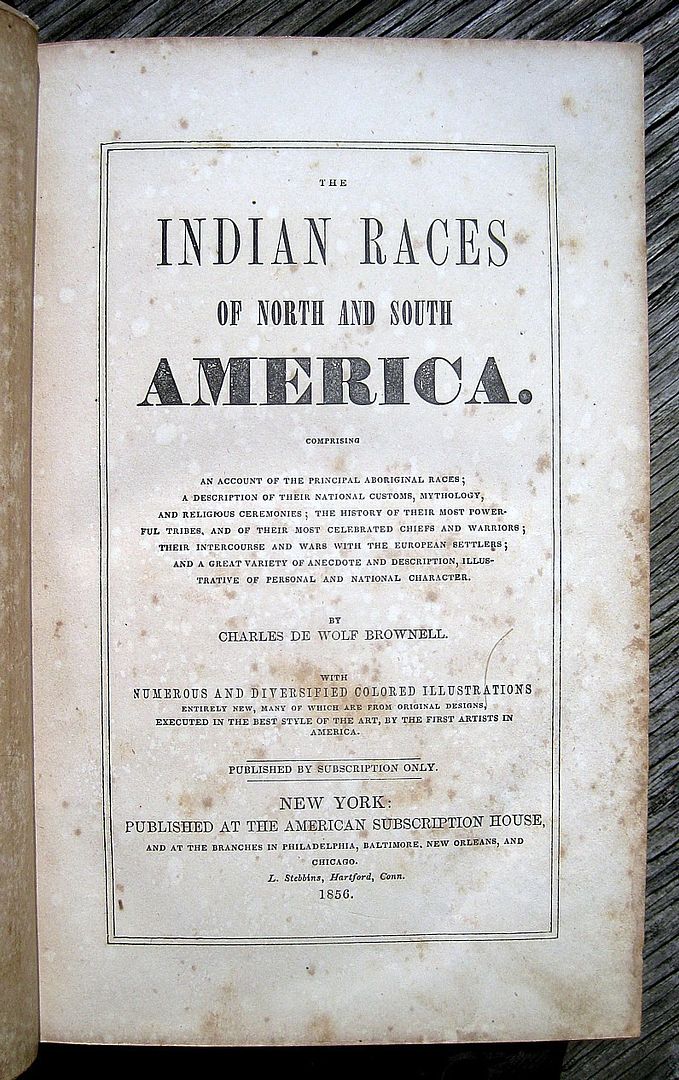
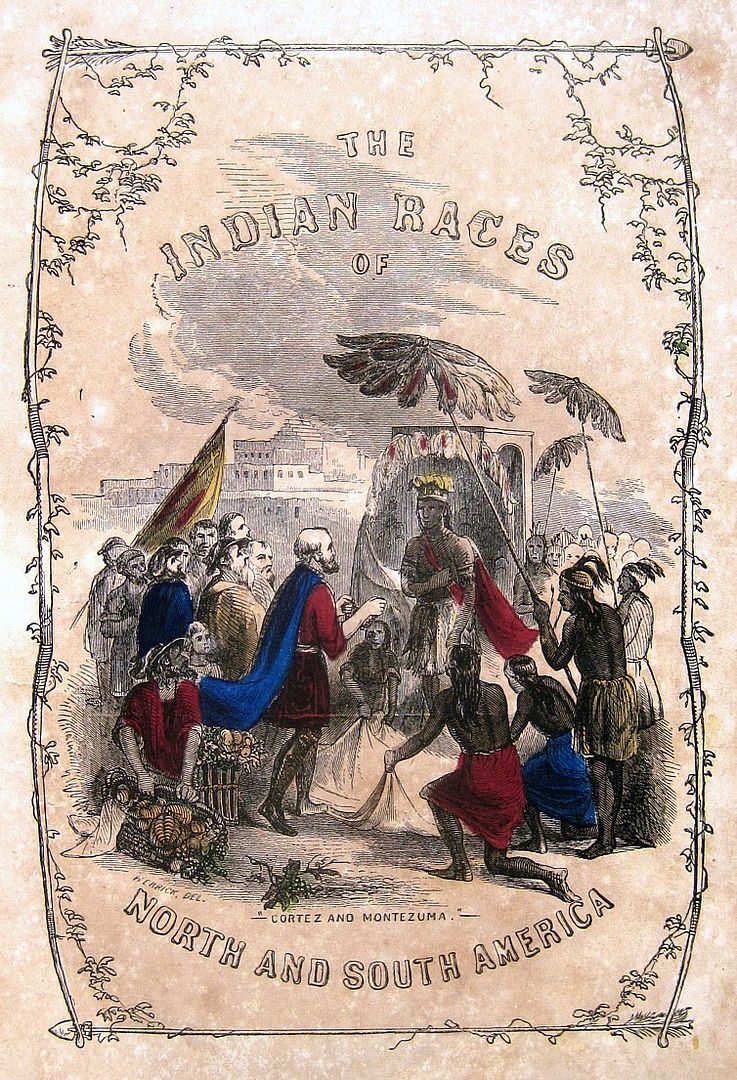

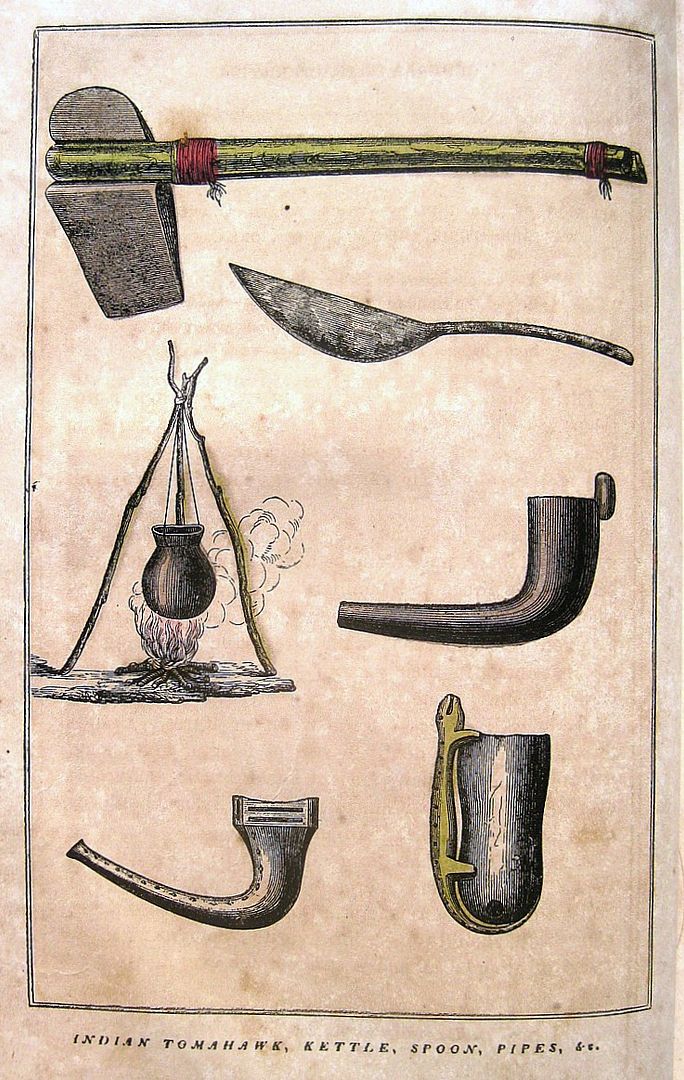
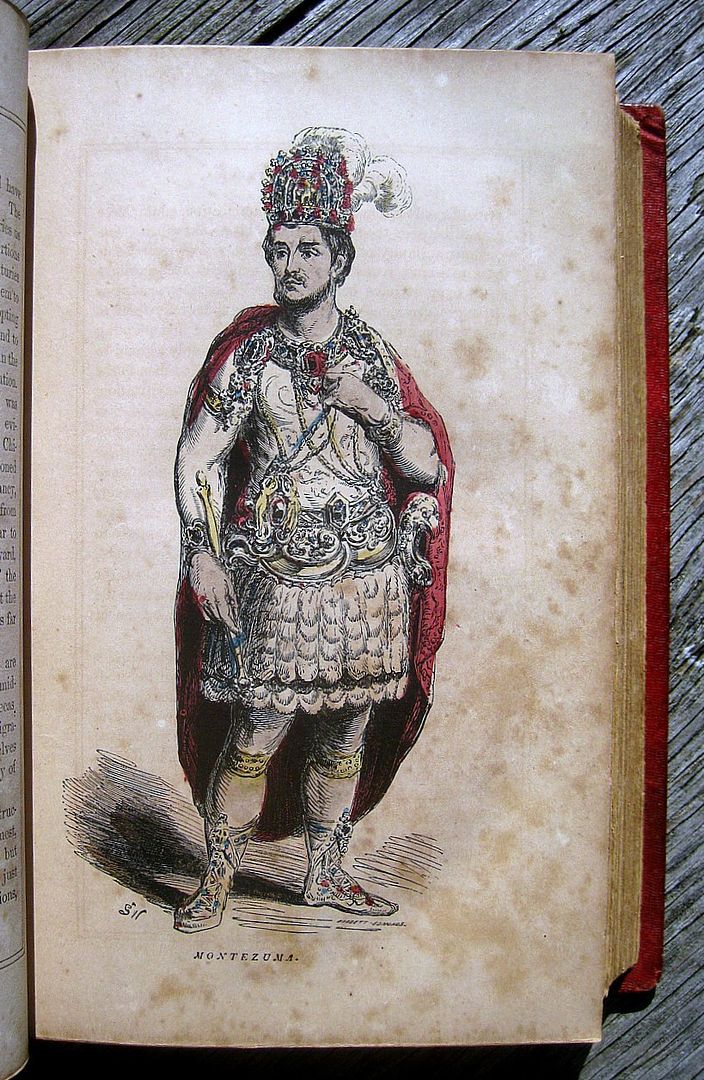
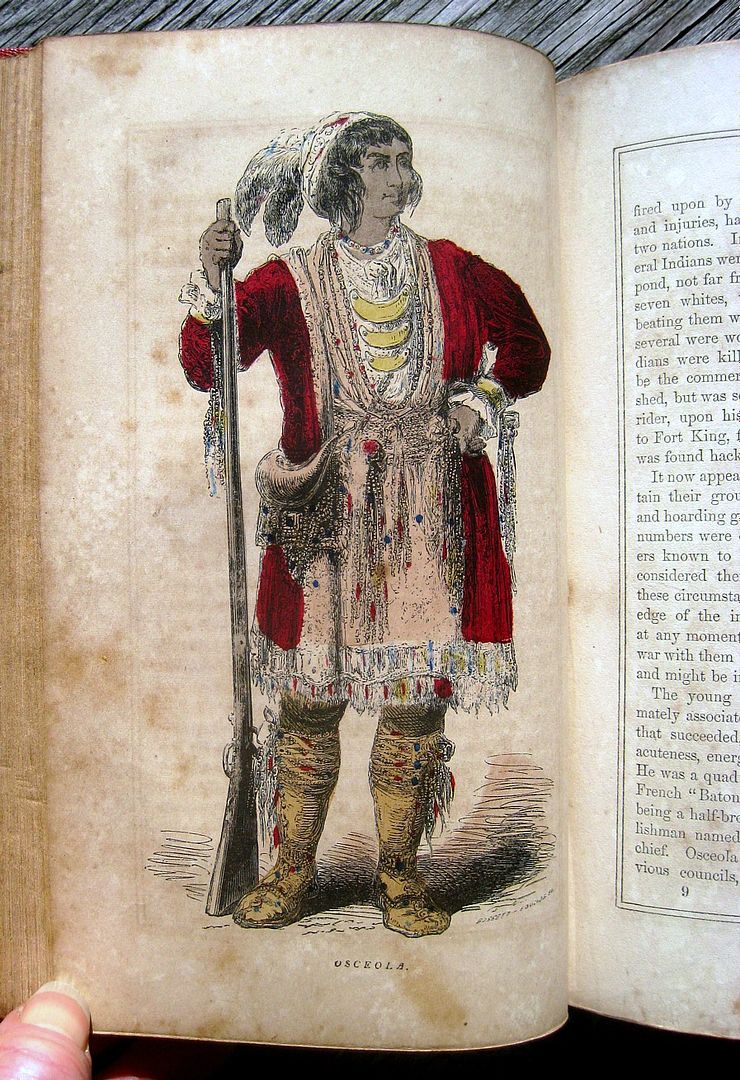
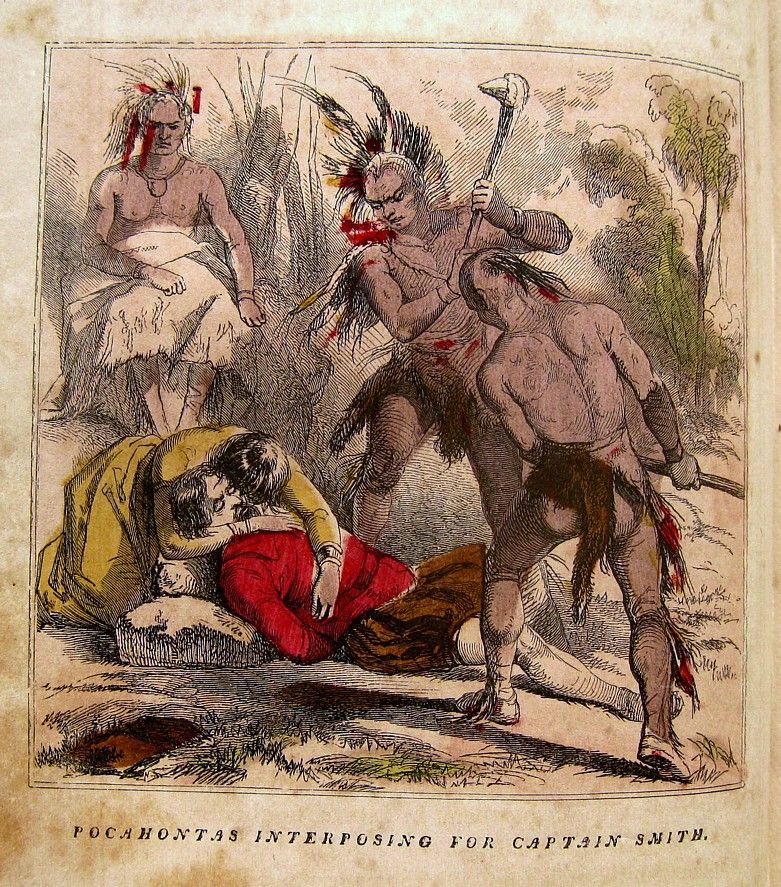
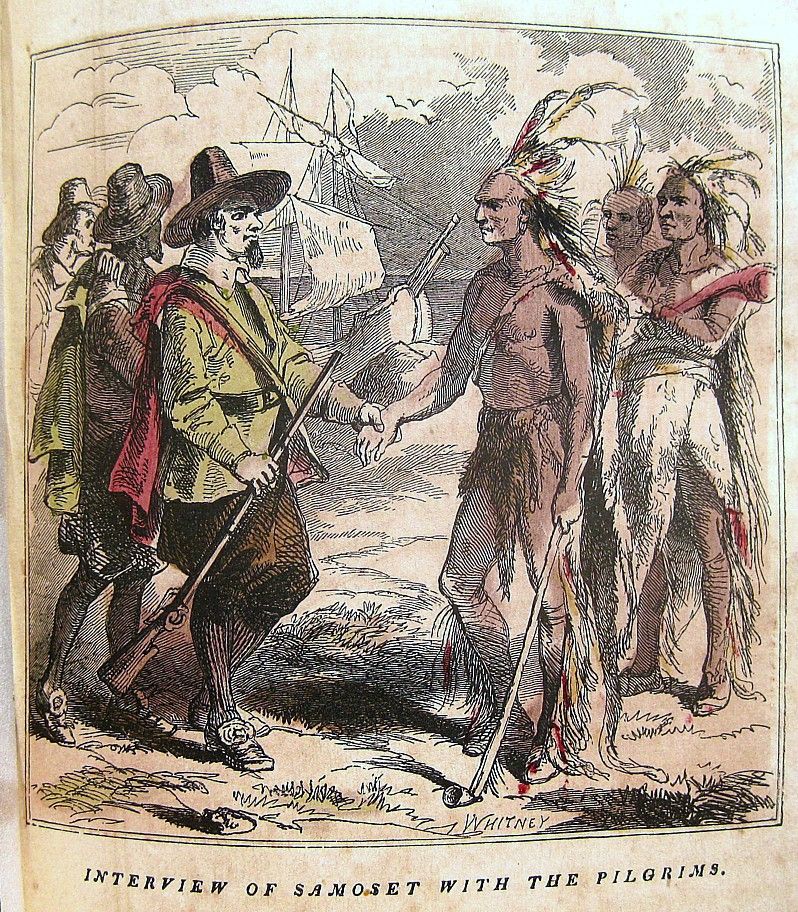


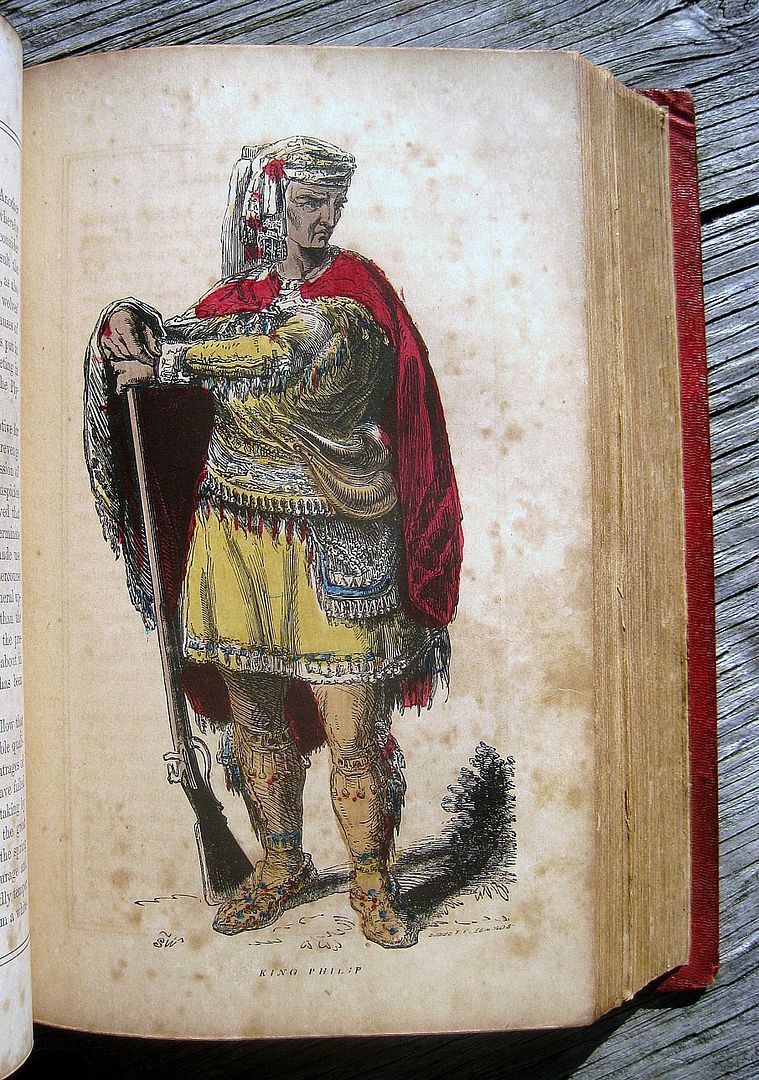
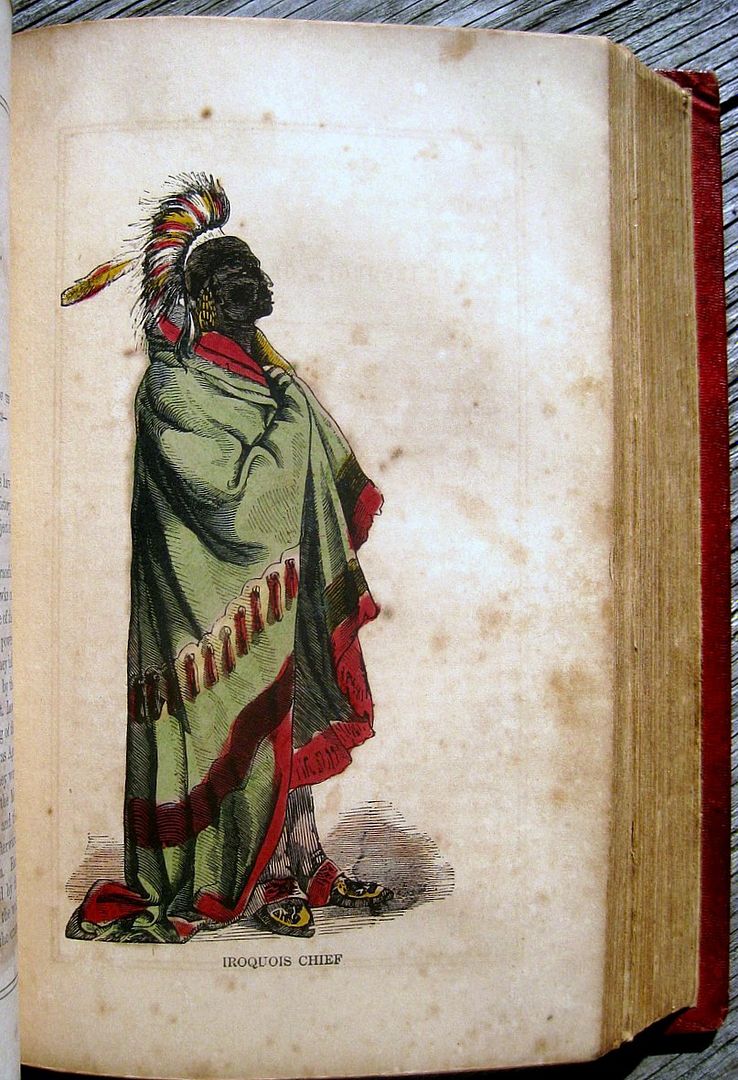
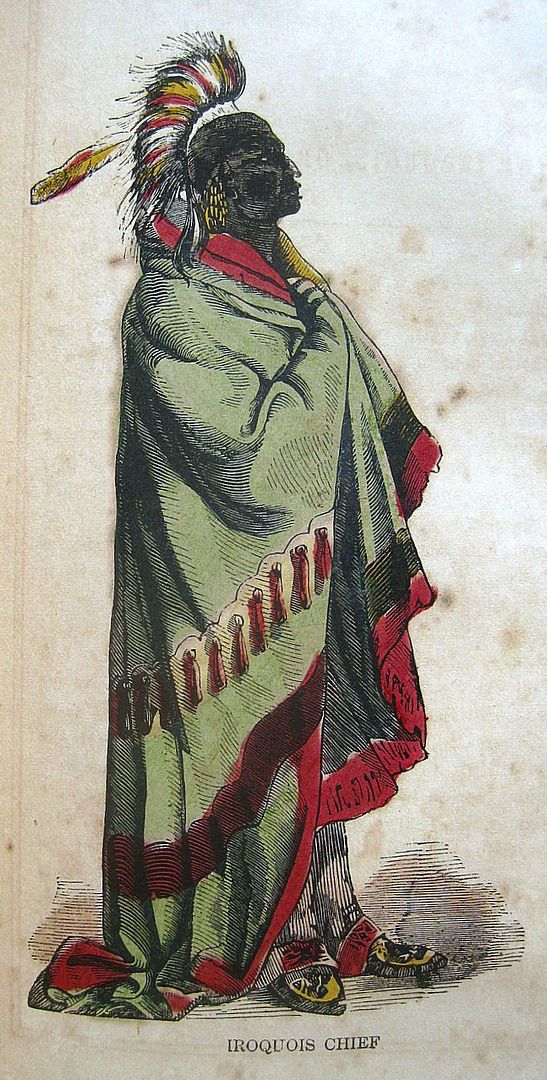
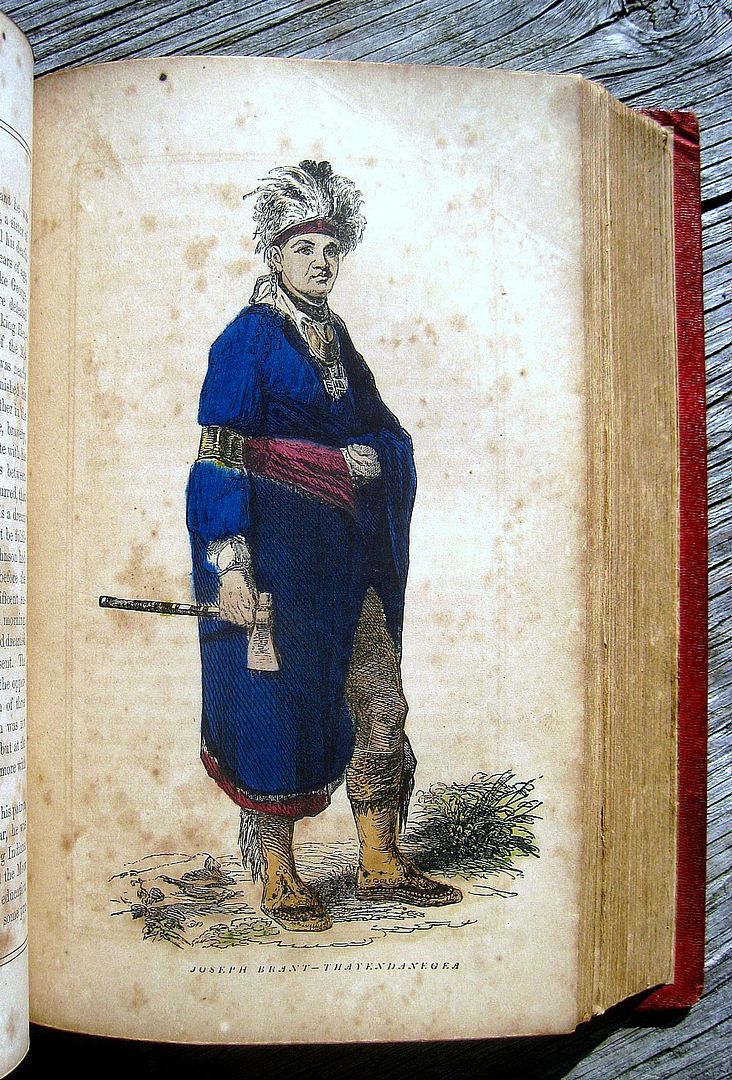

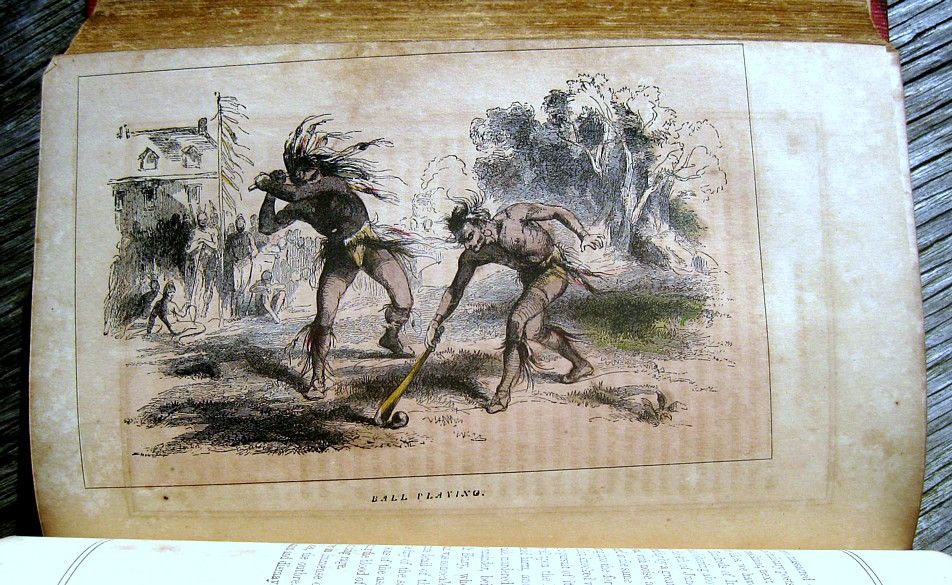


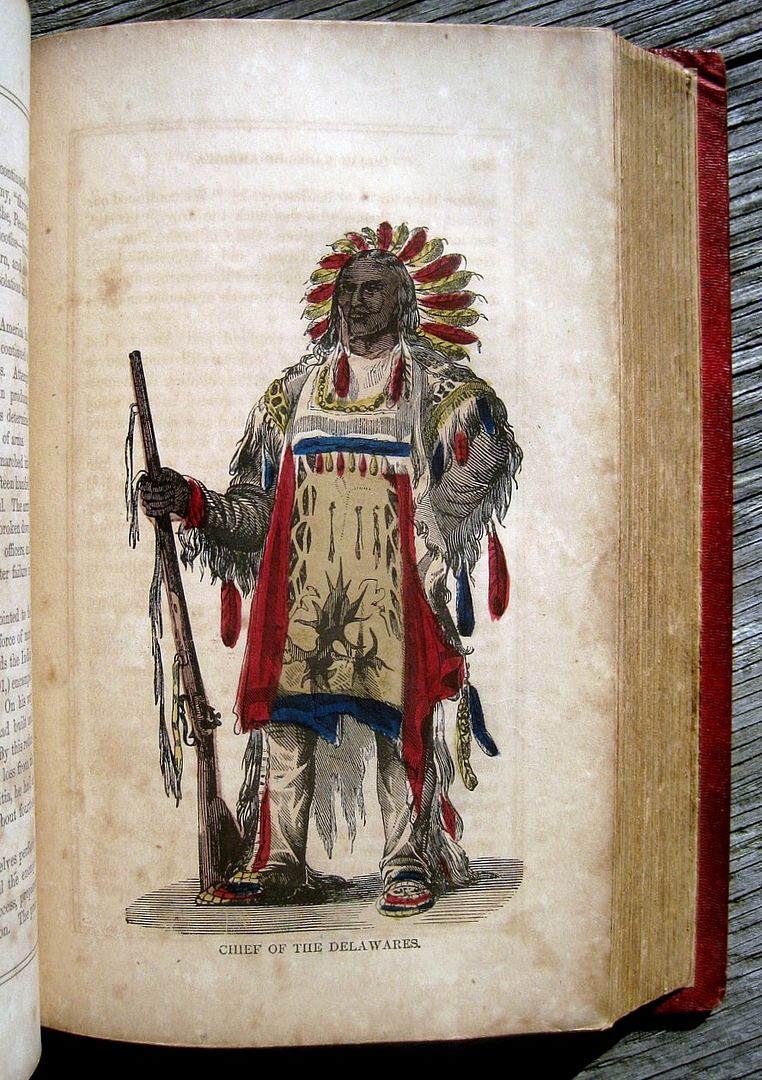
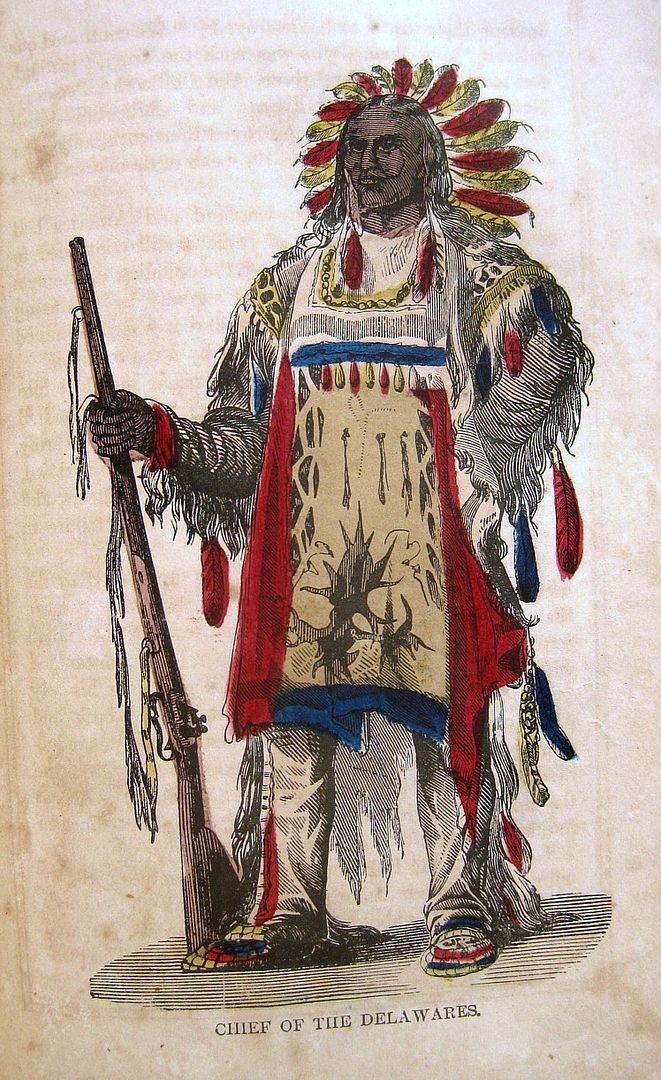
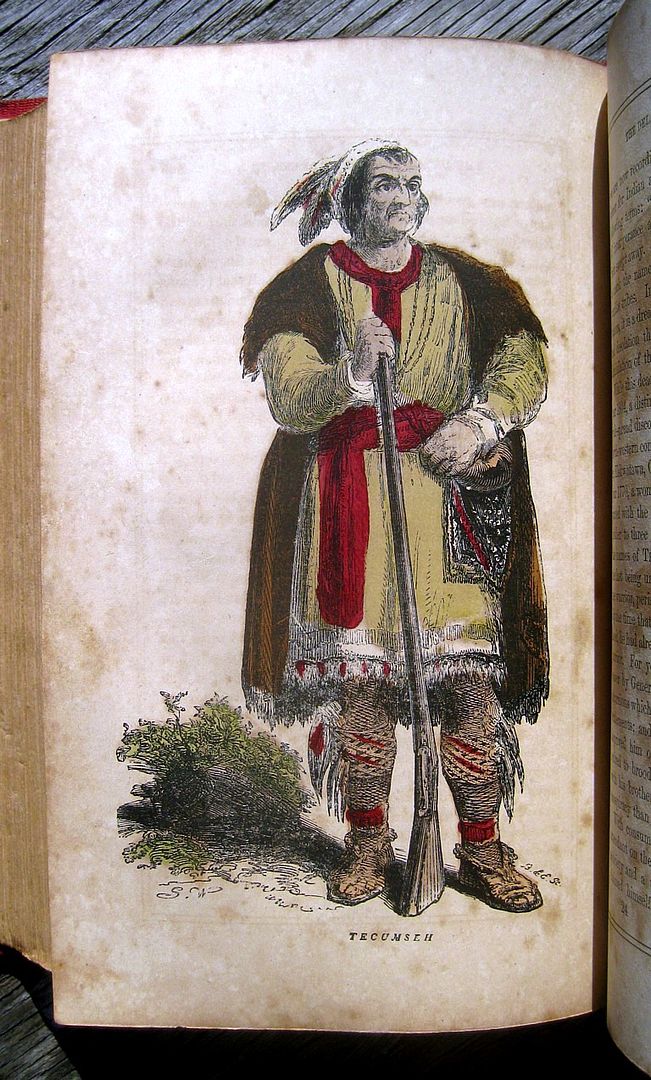
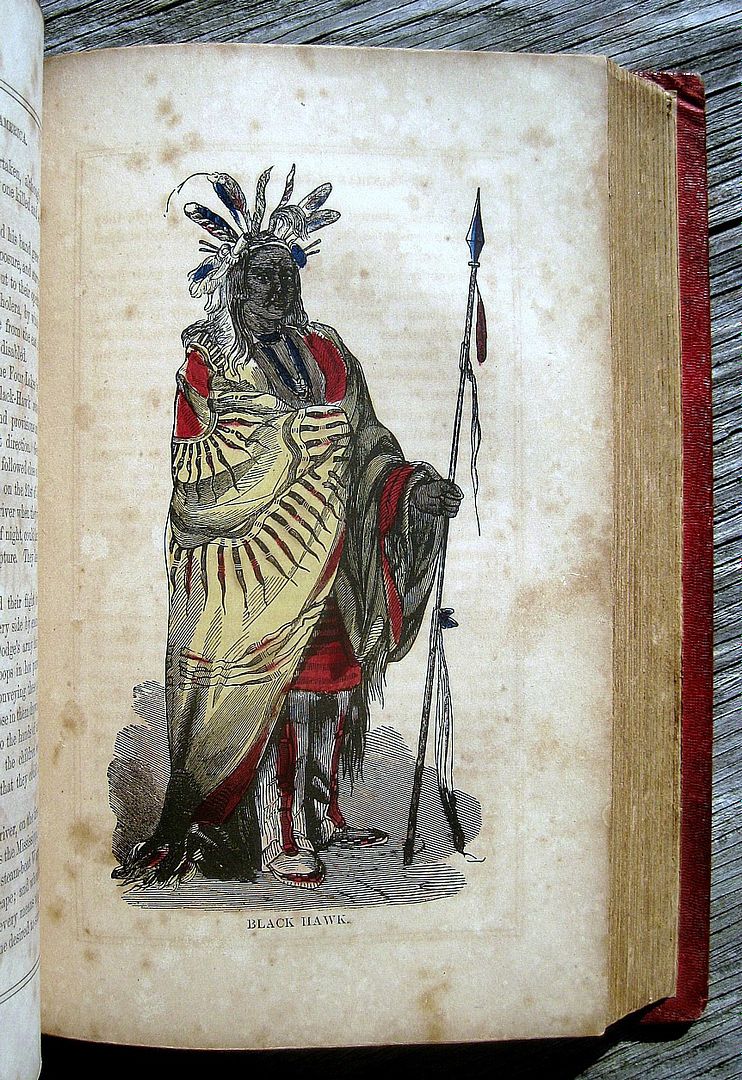

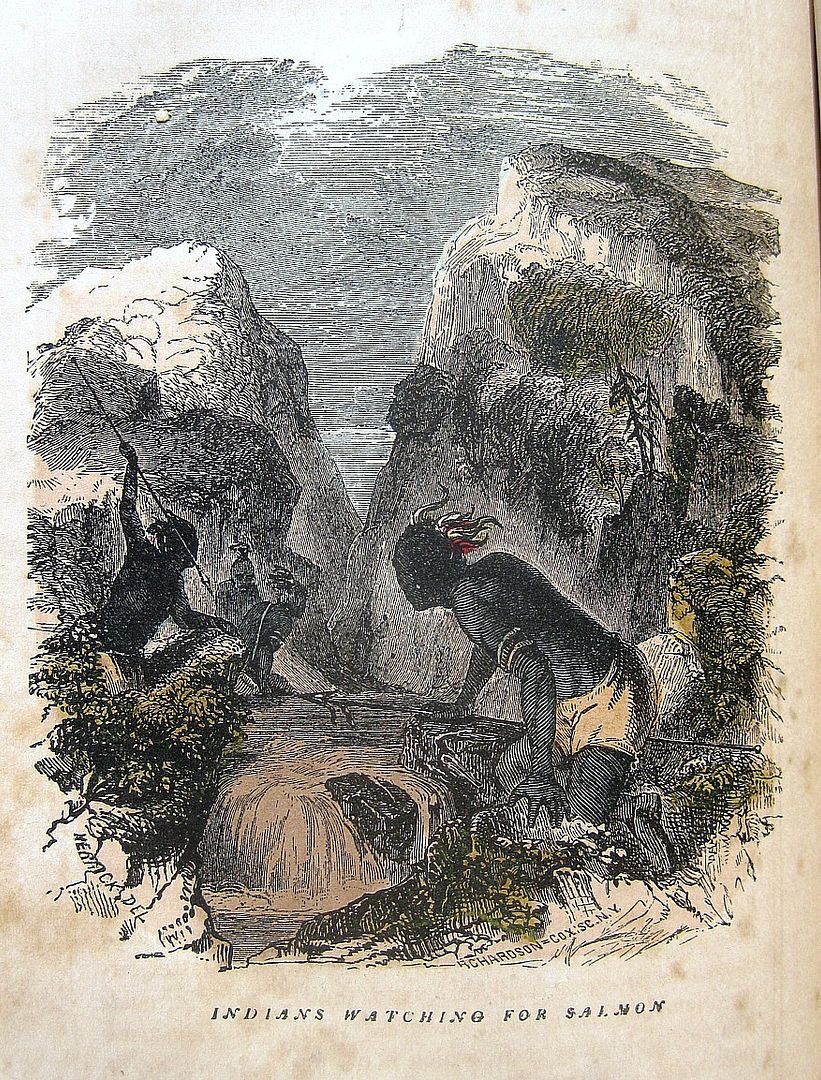
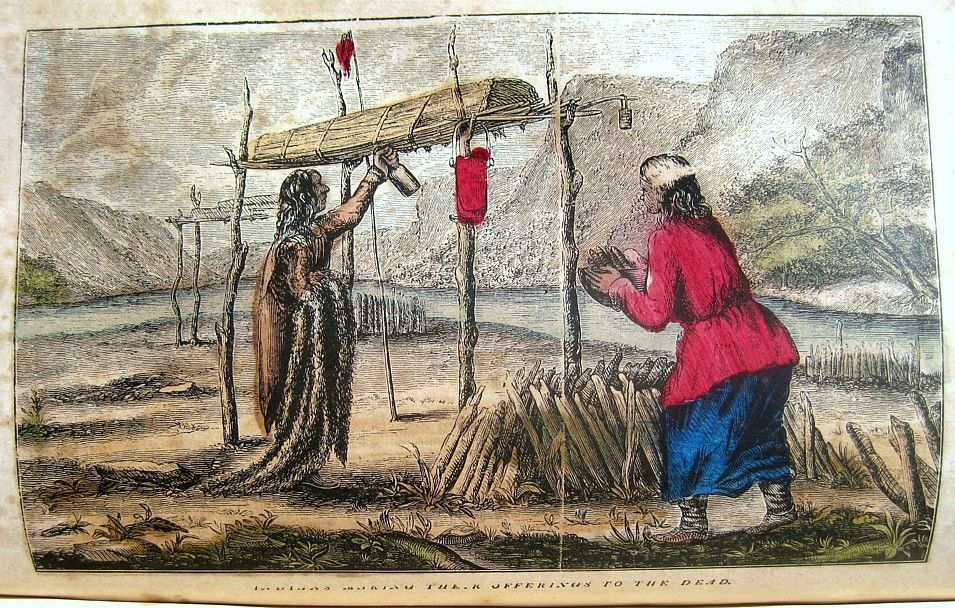
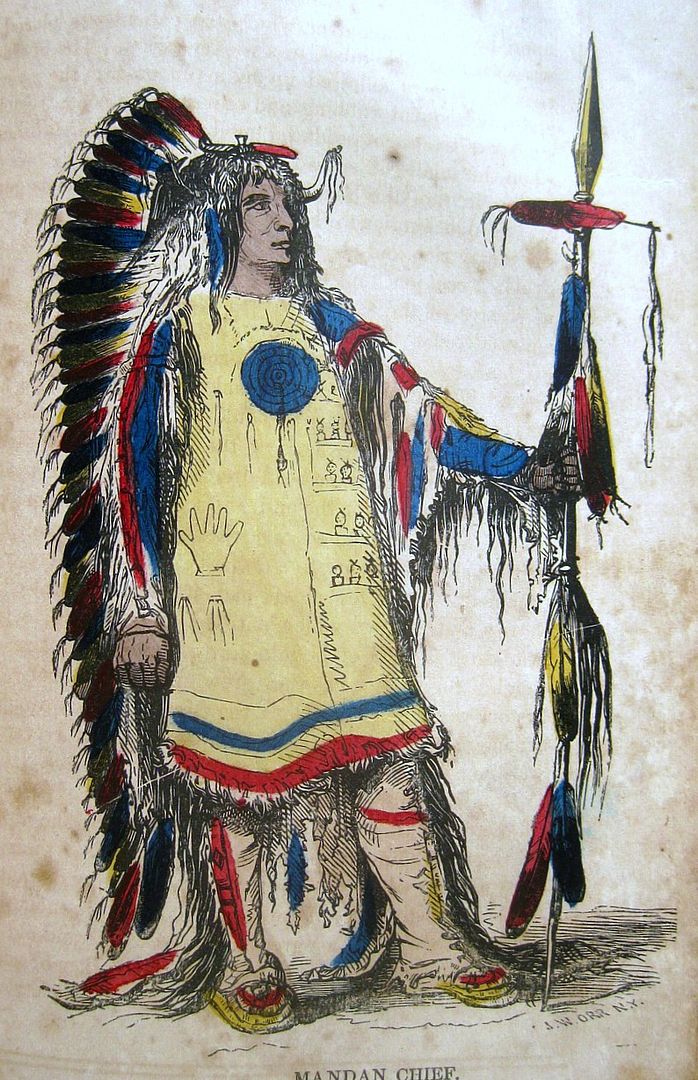


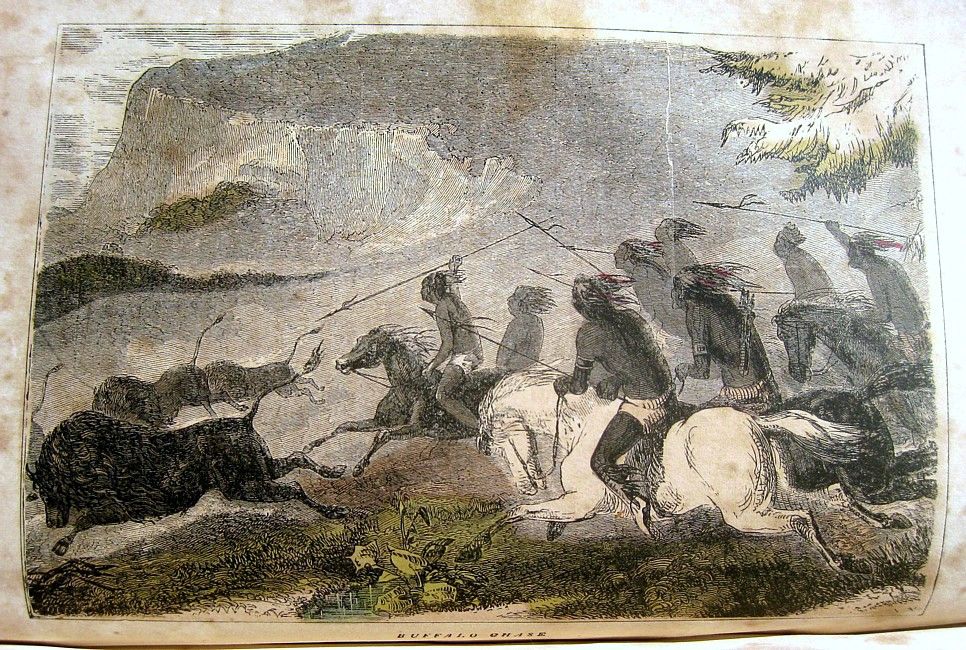
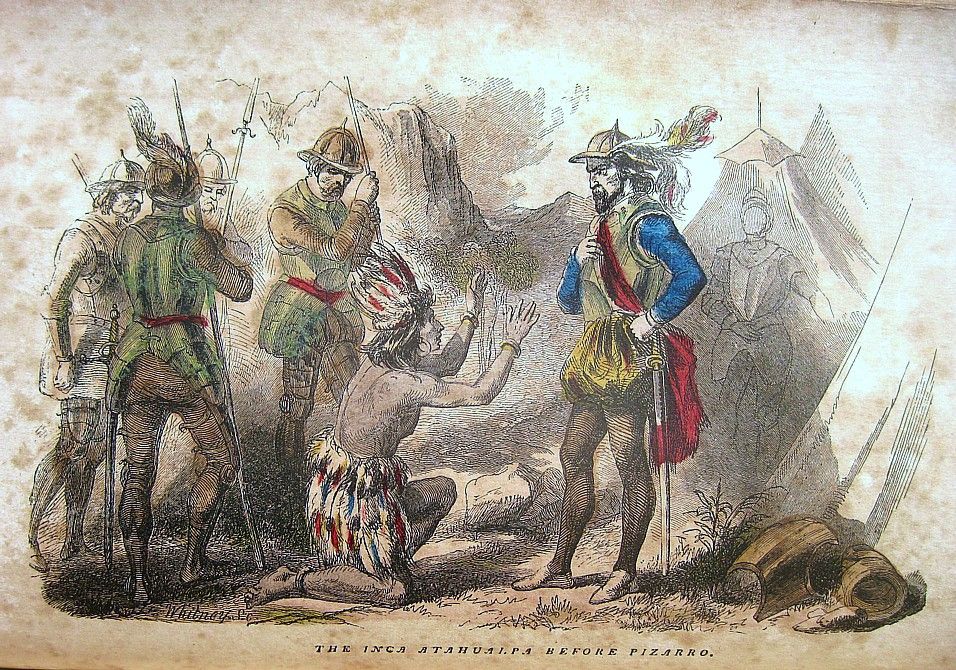
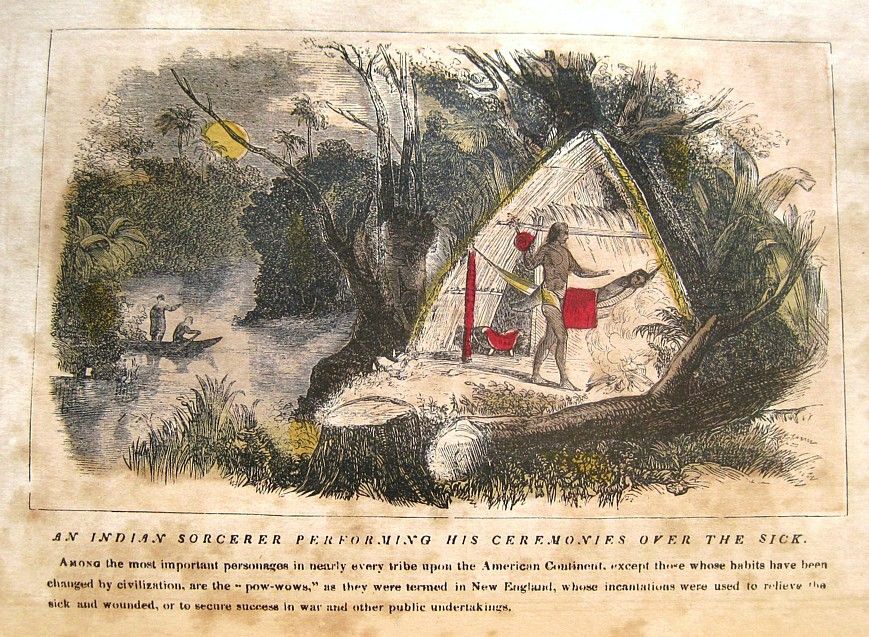
Samples of text pages:
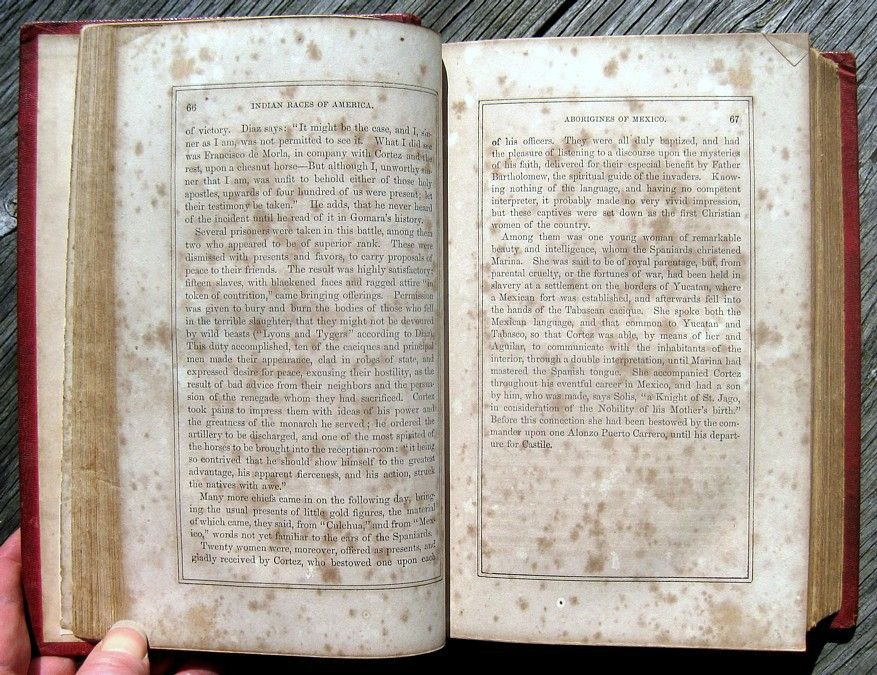
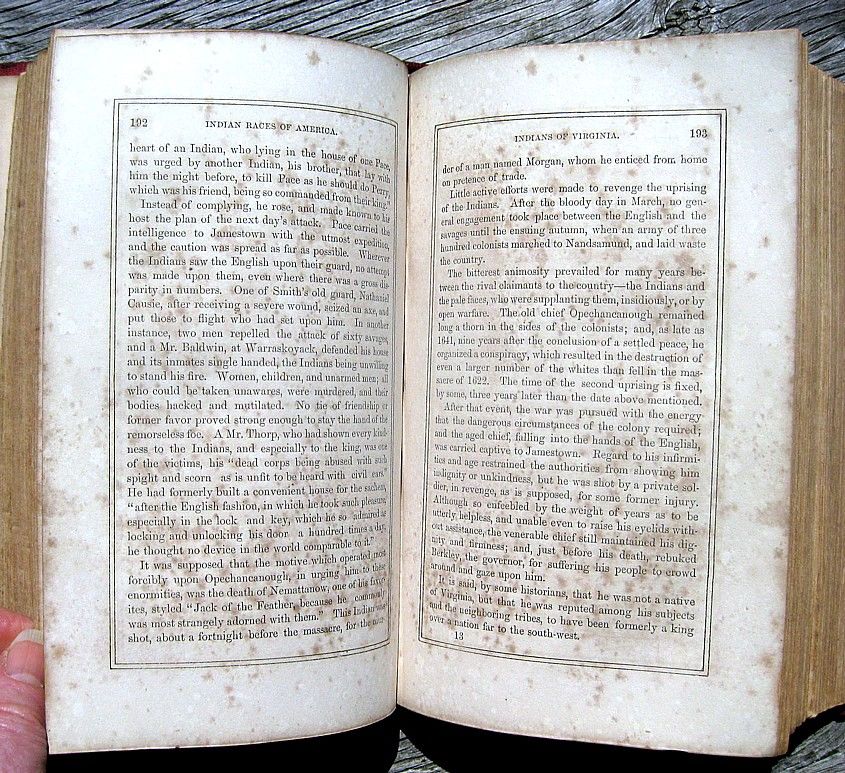
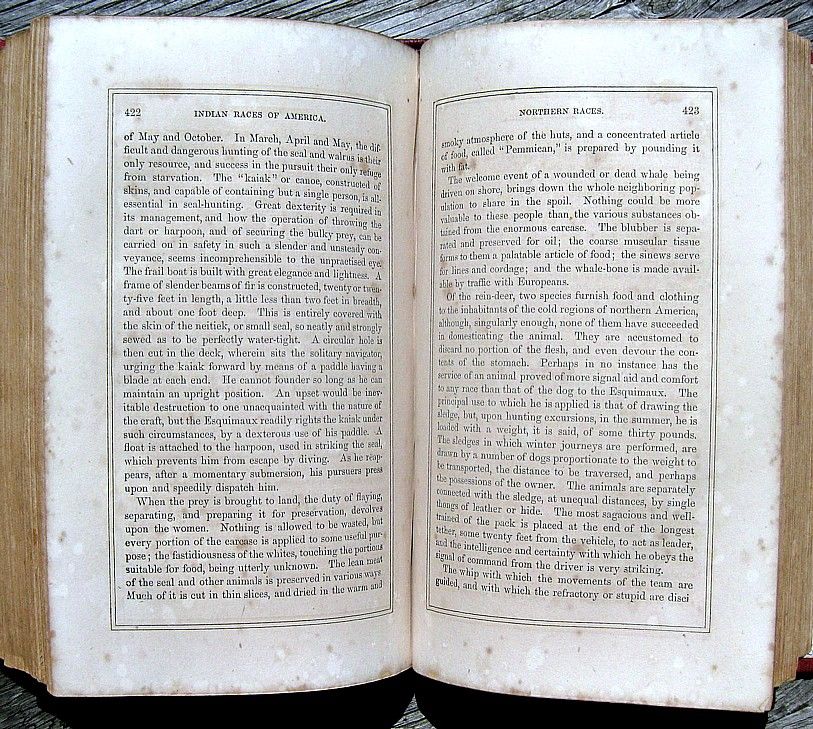


Remember folks, this is an 1856 original. This book is 168 years old.
Check out all the RARE ANTIQUE BOOKS ABOUT THE INDIAN WARS, CIVIL WAR, REVOLUTIONARY WAR AND THE OLD WEST THAT I'M OFFERING ON EBAY THIS WEEK!
Please be sure to add me to your List of Favorite Sellers!
Don't miss out on any of my latest listings. Click here to sign up for the NEETMOK NEWSLETTER!
Winner pays for media mail shipping in the United States of America.
© 2011-2024 by eBay seller neetmok. NEETMOK BOOKS IS A REGISTERED MEMBER OF EBAY’S VERO PROGRAM. Unauthorized use of Item Description Text or Images is a violation of eBay rules, as posted by eBay: "No Copying Allowed! When you prepare your listings you generally should use only material (text, photographs, etc.) and trademarks/names that you created or own yourself or licensed from the owners." Auction page content (i.e., item description text; lists of contents, lists of illustrations/photos; scanned images, etc.) was written/compiled/formatted by eBay seller neetmok and, as intellectual property, is protected by copyright. UNAUTHORIZED USE OF ITEM DESCRIPTION TEXT INCLUDING SUMMARIES OF CONTENTS, ILLUSTRATIONS, ETC., PHOTOS OR OTHER PROPRIETARY INTELLECTUAL PROPERTY IS STRICTLY PROHIBITED AND WILL BE REPORTED TO EBAY’S VERO DEPARTMENT FOR IMMEDIATE ACTION.
